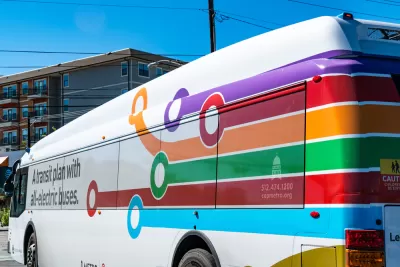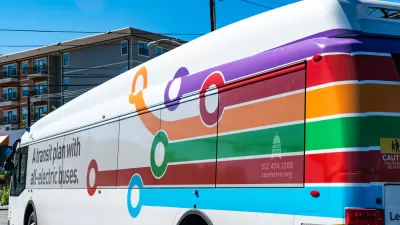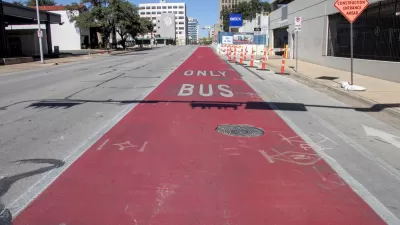A once sprawling and singularly ambitious capital investment plan for the Capital Metro system will soon be reduced in size and scope. The episode is more evidence of an emerging era of transit planning austerity.

Project Connect, the Austin region’s far-reaching and sweeping transit investment plan was made possible when voters approved a new 8.75-cent property tax in 2020. Since then, however, Capital Metro’s planning partners have struggled to begin projects, a trend that culminated with an announcement in 2022 that a reduction from the original vision set forth by the plan was necessary.
On the cusp of a community engagement process to consider revisions to the plan, an article published by TransitCenter considers the lessons from Project Connect as transit agencies around the country—most notably in Atlanta and New York City—reduce their planning ambitions amid labor shortages, increasing construction costs, inflation, and stagnant ridership.
The sources quoted in the article discuss the lessons learned so far, about the importance of governance and the challenges presented by unforeseen engineering and political obstacles.
Overall, the message from local advocates is optimistic. Project Connect is still viable, it just has a few hurdles still to overcome.
FULL STORY: Austin’s First Attempt at a Big, Urban Transit System Has More Obstacles to Overcome

Study: Maui’s Plan to Convert Vacation Rentals to Long-Term Housing Could Cause Nearly $1 Billion Economic Loss
The plan would reduce visitor accommodation by 25,% resulting in 1,900 jobs lost.

North Texas Transit Leaders Tout Benefits of TOD for Growing Region
At a summit focused on transit-oriented development, policymakers discussed how North Texas’ expanded light rail system can serve as a tool for economic growth.

Why Should We Subsidize Public Transportation?
Many public transit agencies face financial stress due to rising costs, declining fare revenue, and declining subsidies. Transit advocates must provide a strong business case for increasing public transit funding.

How to Make US Trains Faster
Changes to boarding platforms and a switch to electric trains could improve U.S. passenger rail service without the added cost of high-speed rail.

Columbia’s Revitalized ‘Loop’ Is a Hub for Local Entrepreneurs
A focus on small businesses is helping a commercial corridor in Columbia, Missouri thrive.

Invasive Insect Threatens Minnesota’s Ash Forests
The Emerald Ash Borer is a rapidly spreading invasive pest threatening Minnesota’s ash trees, and homeowners are encouraged to plant diverse replacement species, avoid moving ash firewood, and monitor for signs of infestation.
Urban Design for Planners 1: Software Tools
This six-course series explores essential urban design concepts using open source software and equips planners with the tools they need to participate fully in the urban design process.
Planning for Universal Design
Learn the tools for implementing Universal Design in planning regulations.
City of Santa Clarita
Ascent Environmental
Institute for Housing and Urban Development Studies (IHS)
City of Grandview
Harvard GSD Executive Education
Toledo-Lucas County Plan Commissions
Salt Lake City
NYU Wagner Graduate School of Public Service




























